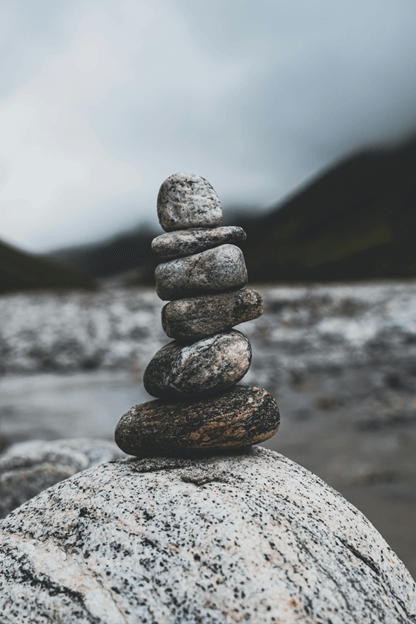This month, we are inspired to talk about how you can improve your balance and why you should. Most people realize that as we age, our sense of balance declines. In fact, this decline begins as early as age 50. Various causes may be in play when it comes to poor balance. These can include medications, heart or brain problems, arthritis, inner ear or vision problems, joint or muscle issues, and more. Even without specific conditions making it worse, a general loss of strength and muscle mass contributes to a gradual decline in balance as we age. Even more concerning: the consequences of taking a fall get more severe as we age.
Our best advice for people of any age when it comes to improving your balance is this:
Stay active and keep moving.
Moving your body, keeping your strength up, even in the form of a simple daily walk helps you keep your balance and avoid taking a fall. From there, we suggest you actively work on your balance.
Exercises for Improving Balance
We like these very basic, beginner-friendly exercises for improving balance from the Mayo Clinic. Here’s why:
- These can be done anywhere.
- They don’t require any special equipment.
- You can do them near a wall or table so you have something to steady yourself, if needed.
- As your strength increases, you can challenge yourself more by doing these balancing exercises for longer periods of time.
- Try them barefoot or add other challenges.
Another idea: if appropriate, don’t use your arms or hands to help you when sitting down or standing up. Little changes over time can add up to big improvements.
If a yoga or tai chi class is something that would work for you, both of these practices involve movements and postures that improve balance as well as overall wellbeing. Check out your neighborhood senior center for options that might be available there. Other options include Silver Sneakers (https://tools.silversneakers.com/). Classes are free for anyone over 65.
Starting a New Habit
We know it can be tough to start a new habit and stick to it, no matter how beneficial it is. Here are a few tips that might help you get into your daily balance practice:
- Link your balance exercises to something you are already doing every day. Balance on each leg after you finish brushing your teeth or complete your balance routine after lunch each day.
- Start simple. Choose something you can do in 2 minutes or less, and work that into your routine. Then build up your time – a minute a week.
- Remember why you want to do this. Why is this important to you? Let that propel you past resistance.
Finally, we offer a reminder that starting new habits and trying new things changes the pathways in the brain. This is called “neuroplasticity” (for more, see our blog post “What is Neuroplasticity?)”. Keeping your brain active with new experiences is just as important as keeping your body fit with regular activity. As you improve your balance with some new exercises, you’ll be creating new pathways in your brain. What’s not to love about that?
References
- Balance begins to decline as early as age 50 – https://www.uclahealth.org/news/article/balance-begins-to-decline-as-early-as-age-50
- Balance problems – https://www.healthinaging.org/a-z-topic/balance-problems/causes
- Balance exercises – https://www.mayoclinic.org/healthy-lifestyle/fitness/in-depth/balance-exercises/art-20546836
- 6 Powerful Ways to Build New Habits-https://www.psychologytoday.com/us/blog/flourish-and-thrive/202002/6-powerful-ways-build-new-habits


Recent Comments